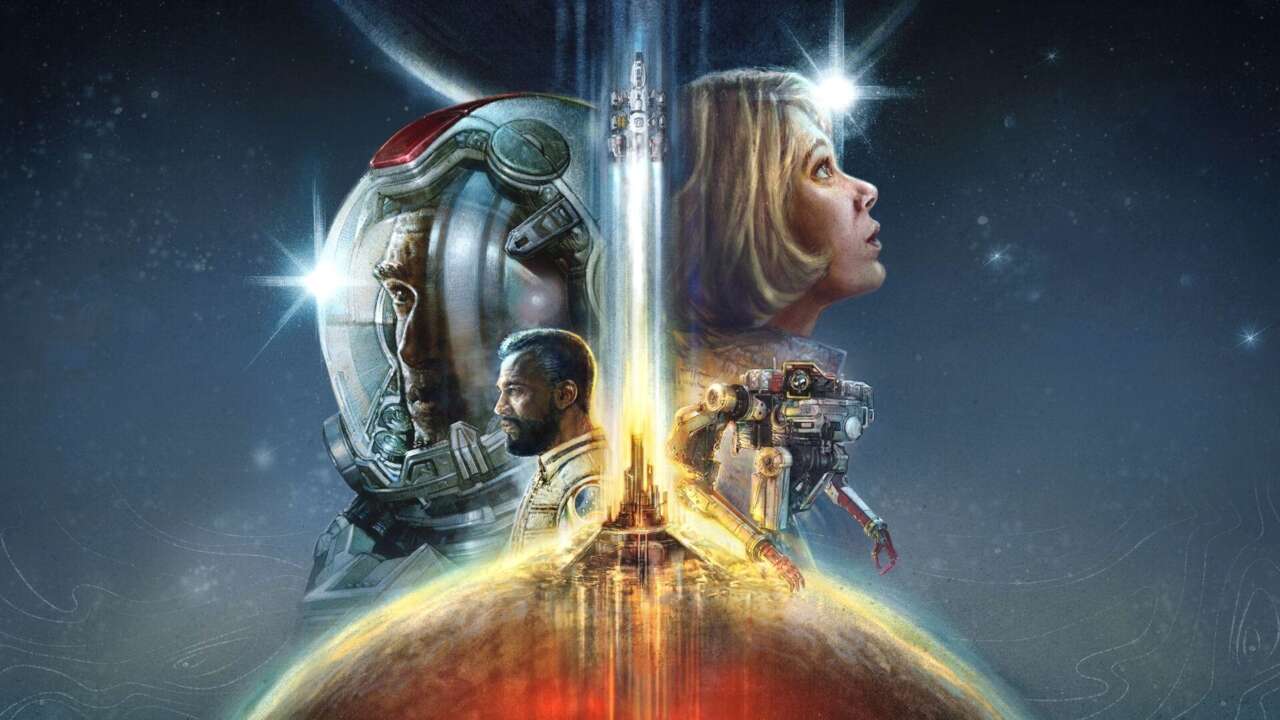Starfield Review – To Infinity, But Not Beyond
It’s hard to ponder the infinite possibilities of space and not get romantic about it. Our imagination of the cosmos has taken many artistic forms, and the hard science behind the greatest discoveries on the final frontier has been just as enthralling. It’s this sense of wonder that makes the prospect of Starfield so intriguing–even more so than if it were just Bethesda Game Studios’ next major RPG. However, it’s best to cast aside that love and fascination with space because, at its core, Starfield follows a very familiar formula without meaningfully engaging with its setting or the gameplay systems therein.
Starfield is undoubtedly impressive in scale, from the sheer number of star systems and planets you can explore to the multitude of gameplay mechanics that tie the experience together. But once you start to see how all these big ideas are interconnected from a narrative perspective and technical standpoint, the illusion of a grand cosmic voyage shatters and the veneer starts to wear thin. And so, somewhere along my 55 or so hours spent playing Starfield, I dropped the notion of finding that wondrous space adventure and accepted Starfield for what it is: a shooter-focused RPG in the traditional Bethesda framework that has its wild and fun moments but one that’s ultimately a mile wide and an inch deep.
Starfield’s main quest is the most emblematic of the game’s shortcomings. Despite romanticizing the idea of taking to the stars to explore the great unknown, these narrative ambitions fall into shallow stories that undersell the spacefaring premise. You start as a lowly miner extracting resources for a faceless corporation and within minutes, come in contact with an “Artifact” that activates mysterious visions of something bigger out in the galaxy–a sort of leaving-the-vault moment like in Fallout. You’re then shuffled into the ranks of a small organization called Constellation, whose sole purpose is to chase these Artifacts and uncover their purpose. With the handful of characters who make up the group, Starfield tries to instill personality into its story, but consistently weak writing and generic dialogue means these characters–who do have a few interesting moments along the way–largely fall flat.
It’s especially tough to buy into the Artifact-collecting scenario when the game’s story extolls the virtues of science, yet undermines them by haphazardly throwing around scientific concepts in dialogue and then resorting to inexplicable supernatural forces that everyone in-game seems to just accept at face value. There’s very little weight or impact given to what characters often describe as great discoveries that could change the course of history, and it’s missing an earnest examination on the nature of humanity’s place in space, even when it tries to be self-reflective. I was never asking Starfield to lecture me on quantum physics, but I hoped for a story that wants to pay reverence to the scientific philosophies that make the genre intriguing to give those concepts their necessary respect.
The wild goose chase that is the main quest lacks strong motivations from a narrative perspective, and the mission structure mostly relies on a predictable formula. You’re often shooting your way through mining facilities to dig up Artifacts your colleagues happened to locate halfway across the galaxy, which involves taking down space pirates because you need someone to shoot. Or you’re fast-traveling to faraway star systems to fetch clues on the next objective, follow laughably nonsensical riddles, or have conversations that could’ve been an email. There are occasional breaks in this process that lead to notable moments, such as having to navigate the grimey underbelly of the cyberpunk-inspired city of Neon, where all the dystopian archetypes thrive.
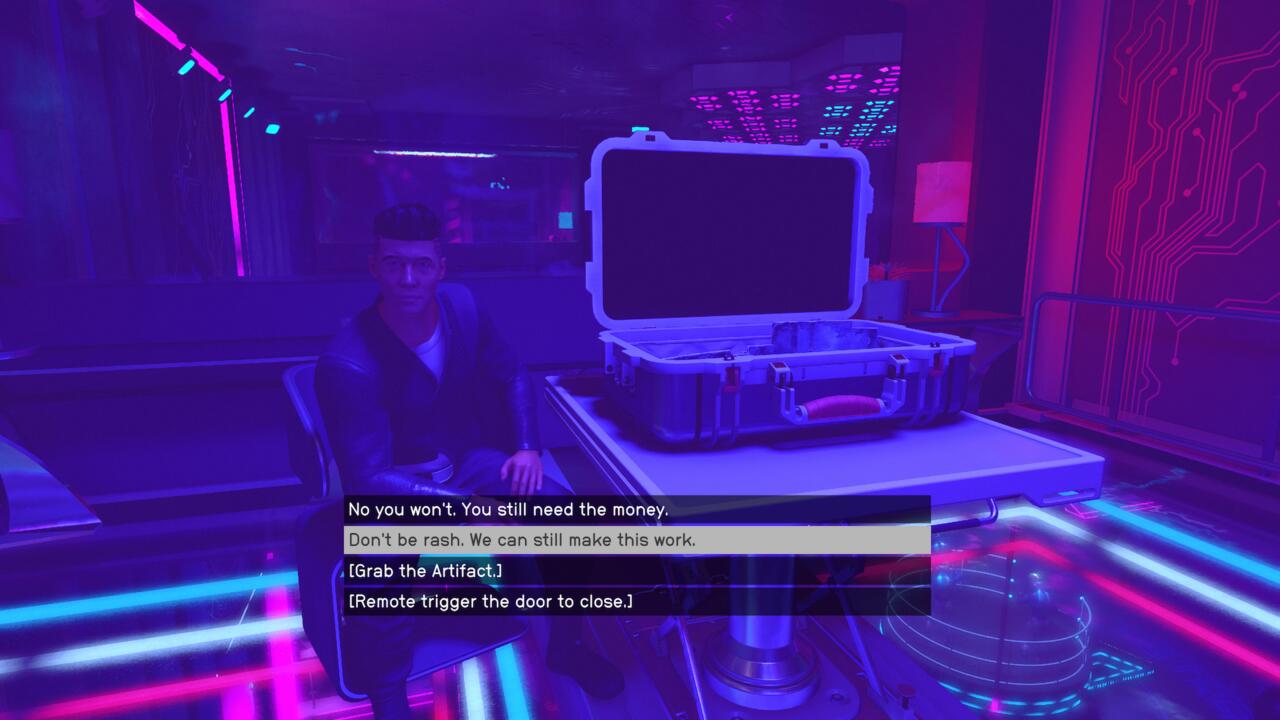
Engaging in tense conversations offer some variance in the moment-to-moment beats but the outcomes are largely the same, like when I had to resolve a bank robbery on a remote planet that resembled the American Old West, or cut a deal with a space pirate for an important item I needed–you’d be surprised how far a simple Persuasion check can get you, yet how little the game cared if it went one way or another. If the situation devolved into a shootout, the people around town would barely bat an eye or give a tangible response to the fact that I resorted to violence.
These kinds of moments highlight the illusion of choice, where supposed moral quandaries boil down to vague differences in philosophy, and this extends across the story and through the final encounters with Starfield’s main antagonists. Towards the end, the main quest legitimately started to shine by setting aside its RPG-light storytelling and embracing being a full-on shooter. One sequence borrows inspiration from Titanfall 2’s Effect and Cause mission, and a late-game mission tested the limits of my combat prowess with satisfying challenge. And despite the underwhelming revelations leading up to the conclusion, Starfield does have a moment of brilliance in how it lets you end your journey, contextualizing New Game+ in one of the most interesting ways I’ve seen while offering a few noteworthy incentives for a second run.
As is tradition with Bethesda games, however, the golden path questline is not exactly the main course, and it’s in the side quests where Starfield is at its best. Here, you set aside the wonders of the great unknown and instead dive into the problems of various factions and the people who’ve settled in the few cities and towns scattered across the galaxy.
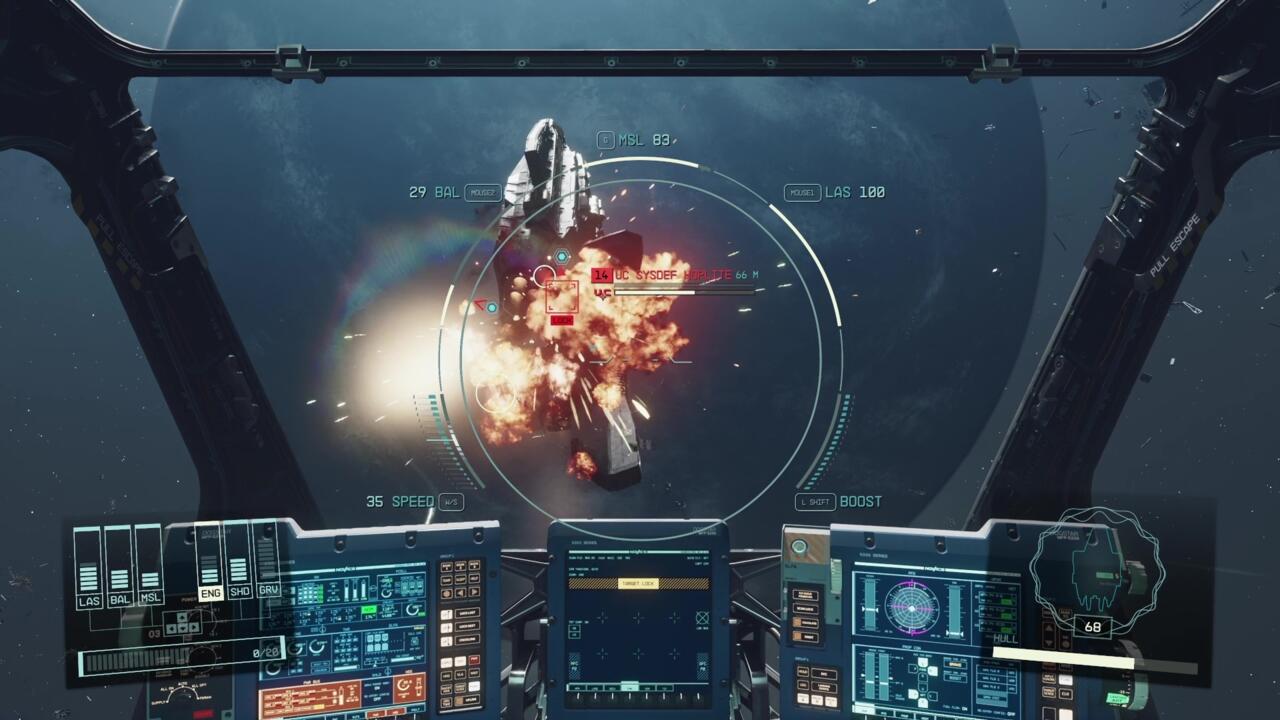
One such example is the Crimson Fleet faction questline, where the de facto galactic government coerces you into going undercover inside space’s biggest criminal ring–and this chain of quests is one of the finest in a Bethesda RPG. It’s not so much the ethical dilemmas or tension you feel when bouncing between the two factions, but the fact you find yourself in the middle of some wild situations like corporate disputes, intense shootouts, blackmailing characters, and infiltrating high-security facilities. Compelling subplots emerge in the process that also tie back to the quest at hand, and you’re hit with some exceptional setpieces that incorporate multiple facets of Starfield’s gameplay systems at a steady pace. I even found myself conflicted when making final decisions since certain side characters began to grow on me. Once the dust settled, I moved on with trekking the galaxy, constantly searching for the same high.
Not every optional questline matches that scope and depth, but there are certainly rare flashes of similar quality. Getting caught up in megacorp Ryujin Industries’ messy business by starting as a rank-and-file employee then meddling in its affairs from the inside was worth seeing through for the corporate drama. Playing space deputy for the Freestar Collective, on the other hand, wasn’t as intriguing per se. It turned out to be predictable on the whole, but it took me to new locations, featured some fun firefights, and offered valuable rewards. Although a bit superficial, helping a ship full of people who never made human contact after leaving Earth hundreds of years ago brought me to a resort-style planet to deal with a greedy CEO, and ultimately gave me the chance to find those in need a new home.
Side content comes in varying degrees of quality, but these are the kinds of rabbit holes you want to fall down; they are what make Starfield worth unraveling, even if the process often feels like a checklist of objectives to blaze through. And at times, they culminate in something almost meaningful. At the same time, the setting starts to seem superficial as it’s less about life on the cosmic frontier and more about petty human problems that are just by-the-book extensions of what we deal with on Earth. While they don’t give the impression of having major impacts on the galaxy’s fate, or explore topics of technology and corporate exploitation impacting human life with much depth, side content is dealt out in droves, and the potential of finding something special propelled me to keep perusing the galaxy in hopes of discovering a worthwhile thread.
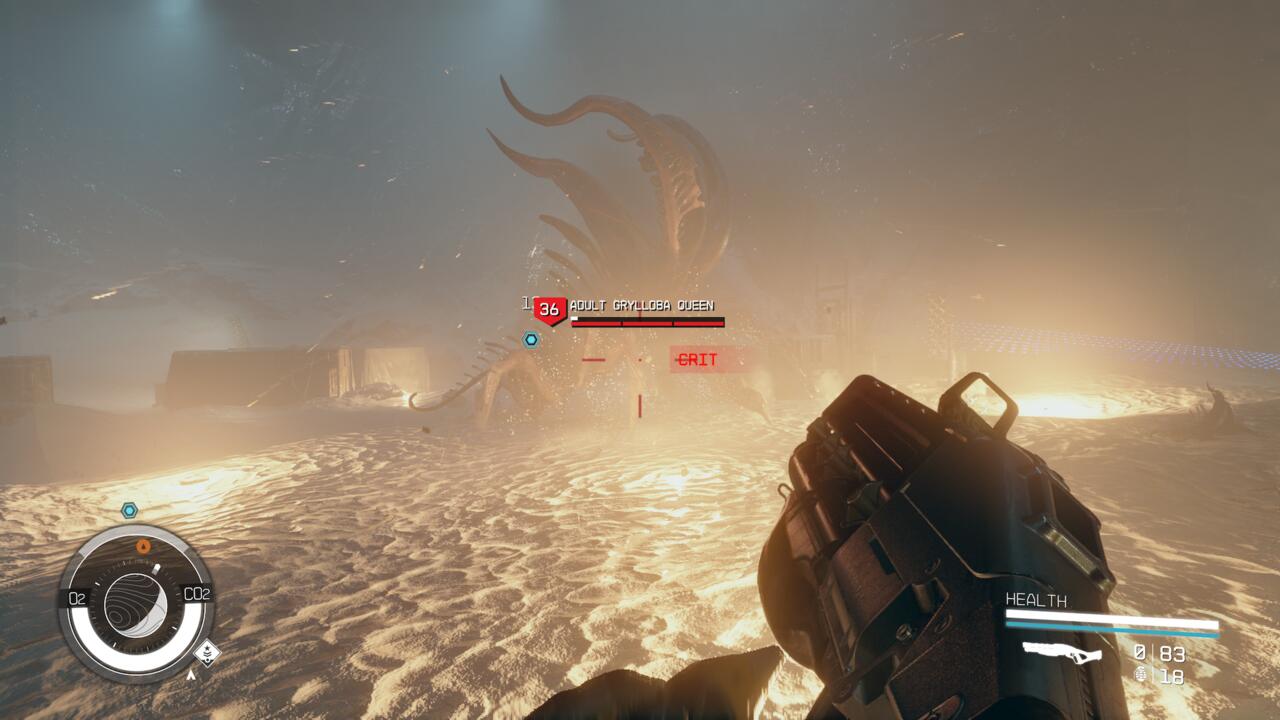
Through these various questlines–main story and side content alike–the limitations of Starfield’s RPG elements came to light. Dialogue options evoke slightly different responses or tease more information, but rarely influence the overarching path. Once you see the machinations, you can gauge what you can get away with and realize quests stay on a set track. You may get the opportunity to use the arbitrary Persuasion check, which breaks off as a minigame awkwardly detached from the actual conversation at hand, or bribe your way past objectives, but those exist as shortcuts to the same end result.
However, there’s still a sense of building your character and progression since you can pick permanent traits at the start and earn skill points as you level up. The skill tree streamlines the perks, stats, and traits of previous Bethesda RPGs which makes sense because Starfield isn’t really concerned with giving you multiple avenues to solve problems or complete objectives. There aren’t really “builds,” rather game mechanics you’ll want to prioritize like damage for specific weapon-types, lockpicking, persuasion success rate, or whatever you deem important engaging with.
Starfield picks up some of that slack when it becomes a shooter thanks to satisfying gunplay and a roster of varied weapons to tinker with. While you shouldn’t expect the feel of, say, Destiny 2, the shooting in Starfield is by far the best Bethesda has offered. Especially when I was zipping around with my jetpack in a big firefight, melting robots with a tricked-out laser rifle before switching to a punchy auto-shotgun to thin out space pirates or blast away intimidating creatures, it was hard to deny Starfield’s chops as a shooter. When combat clicks and sustains the intensity in high-level shootouts, it mitigates the sting of the shallow RPG systems in place.
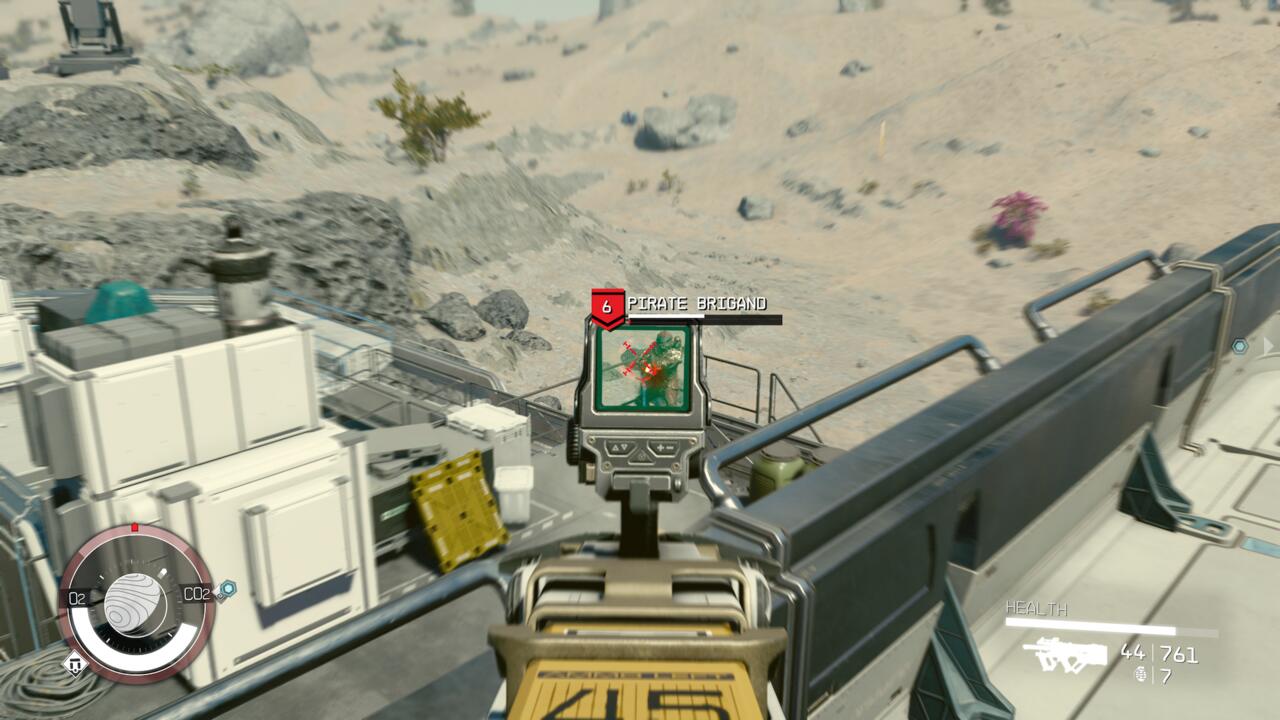
The spacefaring fantasy wouldn’t be complete without your own ship to pilot in dogfights. Ship combat can be frustrating at times, and having to manually allocate a pool of resources to specific functions of your ship on the fly–like engine speed, weapon power, and shield potency–takes some getting used to. But, as I got more involved in earning new ships, upgrading my piloting skills, and buying better parts, I became more satisfied with engaging in ship combat, especially against imposing enemy fleets who I also had to outmaneuver to take down. They’re straightforward encounters, but some quests will force you into these scenarios with some dramatic narrative context, which helps it feel like less of an afterthought.
While I do appreciate having a spaceship as a means to break up the pace and add variety with combat, piloting one also highlights the segmented nature of how you actually navigate Starfield’s worlds. Presumably for convenience’s sake, trekking across the galaxy is relegated to strings of fast travel points. You pull up your starmap, chart the course, jump to a planet’s low orbit, then select largely predetermined landing points on the surface. There’s a lack of seamlessness since each step in the process is broken into multiple steps where you’re mostly pulling up menus, watching short scene transitions, and sitting through loading screens. It’s worth noting that you don’t actually fly to planets in real-time, and flying in space is sort of an instanced bubble with nearby planets in the background. All this creates the feeling that Starfield’s universe is rather small and, very quickly, I’d treat planets as a collection of fast-travel points, disjointed stand-ins for individual towns or cities.
Impressively massive metropolises like New Atlantis or dense and interesting cities like Neon are peppered throughout the journey, but unlike in the Elder Scrolls or Fallout games, there isn’t a build-up to discovering them. This is due in part to the absence of a larger overworld that can be used to pique interest and stoke curiosity, leading players to have that moment of unveiling new locations. Instead, it’s the menus that funnel players directly into these locations, eliminating the sense of awe and wonder that comes from stumbling upon them. And even finding your way around these places is a pain with the near-complete absence of a local map system–I became familiar enough with the pathways to find key locations in frequently visited places, but it’s a major oversight that in a space-traveling future, we can’t get a halfway decent map of the most populated settlements.
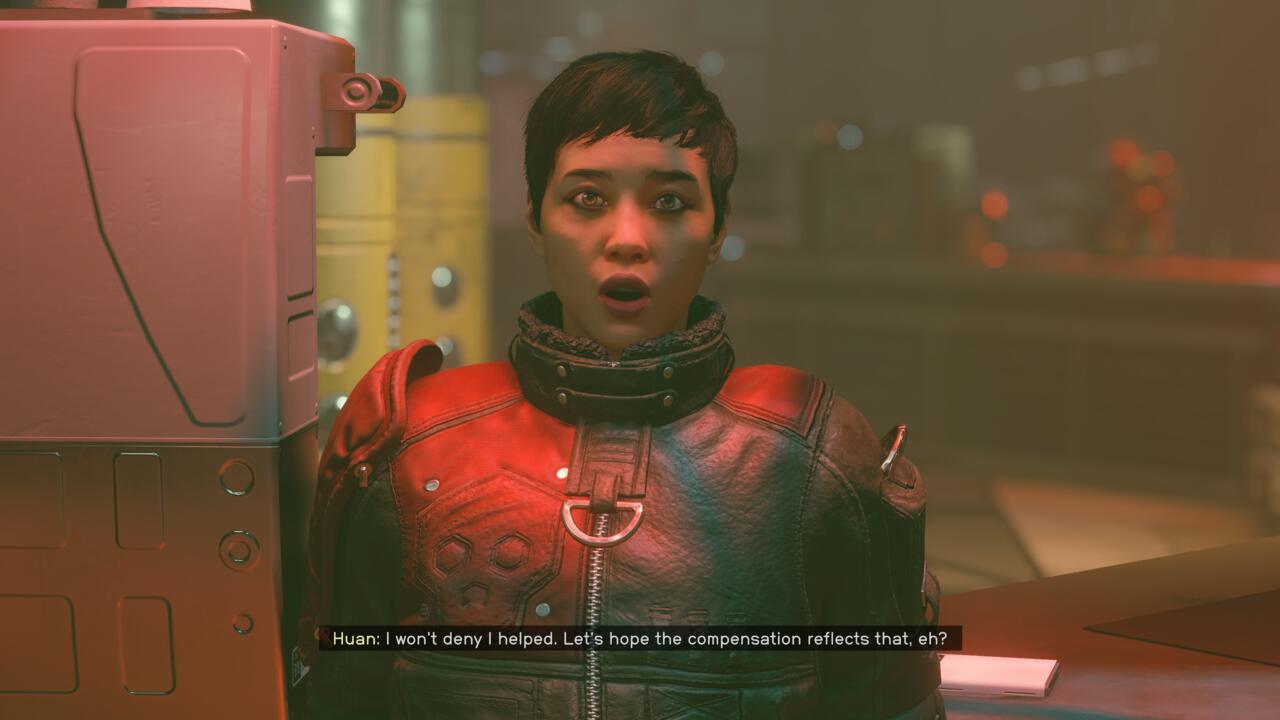
Though very limited from a gameplay perspective, space exploration is still novel in Starfield, harkening back to the hours I spent in Mass Effect’s galaxy maps out of sheer curiosity. Pulling up the starmap to see a hundred-something planets is stunning, and I still love being overwhelmed by the view of a new planet from my ship in low orbit and reading its data as if it’s a real place. However, the sense of discovery is dulled when I’m often landing on barren planets, slogging my way across them on foot only to find the same mining facility or research laboratory I found halfway across the galaxy on another planet.
One consolation is being able to build your own outposts on habitable planets, which is an endeavor for those who want to get into setting up mining operations for resource collecting and using the research mechanics to unlock new items. Starfield borrows from Fallout 4 and Fallout 76 in this regard, and the systems and inventory management are as cumbersome as ever. But from the few hours I spent delving into building my own outpost on a remote planet in the far reaches of space, I saw the value of establishing an ecosystem even if it’s only for the sake of creating intricate settlements for myself and crewmates I’ve recruited to help with the operation.
There are a ton of interconnected systems that make up Starfield’s overall gameplay experience, so in a way, it’s surprising to see how it comes together with relative polish. Bethesda RPGs have a reputation for being buggy–and don’t get me wrong, Starfield has its fair share of bugs–but I’ve mostly encountered rather inoffensive glitches like floating eyeballs or characters clipping through walls or getting stuck in place, which were fixed by reloading or rebooting the game. Across my 55-plus hours, I jumped between a high-end PC, a minimum-spec laptop, and both Xbox Series X and S. Starfield is a demanding game and you’ll get some frame drops in densely populated areas or in the heat of battle where particle effects fill up the screen, yet the game always managed to stay playable on reasonable graphics settings. The 30fps cap on consoles is a bit disappointing, but the most important part is that it held a consistent frame rate throughout.

Accounting for all its ups and downs, the main thing I wrestle with is that Starfield is missing an overall sense of purpose. My favorite RPGs have their fair share of shortcomings and limitations, but the best ones always leave a lasting impact that comes through having a clear purpose. Even my favorite Bethesda RPGs do this well. Morrowind, Oblivion, and Skyrim have intricate magic systems, cultures to familiarize yourself with, and rewards for exploration in whichever direction you wander in. Obsidian’s Fallout: New Vegas drops you in a barren desert wasteland as a nobody, yet is so full of personality, humor, and sobering examinations of the human condition in the wake of a societal collapse. I can’t help but feel Starfield banked on the intrigue of space exploration and the vastness of the cosmos, and forgot to create an identity beyond that.
Despite the nigh-limitless possibilities the final frontier offers, Starfield’s version of humanity remains largely homogeneous–300 or so years into the future across the galaxy, and the game’s imagination rarely extends beyond the sci-fi archetypes we’ve seen many a time. It doesn’t have much to say about humanity leaving Earth behind and doesn’t really reckon with the realities that dictate the world–our world–that inspires its very premise. In the periphery, you can learn about how life is sustainable across the galaxy or tease out lore on how governments and religions evolved, but Starfield struggles to integrate that into its core ethos. I didn’t come in expecting something poetic like the Carl Sagan books I read growing up, awe-inspiring like The Outer Wilds, or as intricate as the sci-fi lore built over the course of the Mass Effect trilogy. But I did want something more than the pared-down Bethesda template transposed over a space setting.
Starfield has its moments, for sure. Its satisfying gunplay makes combat exciting, especially when it’s integrated into setpieces within its better, more captivating questlines. And although limited in its conception of space exploration, there’s a novelty in poking around the galaxy to see star systems up close and personal, and occasionally finding side content worth chasing. However, it struggles to deliver a cohesive and memorable RPG experience amid the seemingly boundless sea of stars. For all its reverence for scientific philosophy, its stories and characters paint a rather tame and sterile vision for what our spacefaring future could look like. When you strip Starfield down to its essentials, it relies on a tried-and-true, but well-tread formula while missing some of the depth of the games that came before it. Starfield is a game more concerned with quantity than quality, and leaves the experience at the surface level.
For all the latest Games News Click Here
For the latest news and updates, follow us on Google News.

